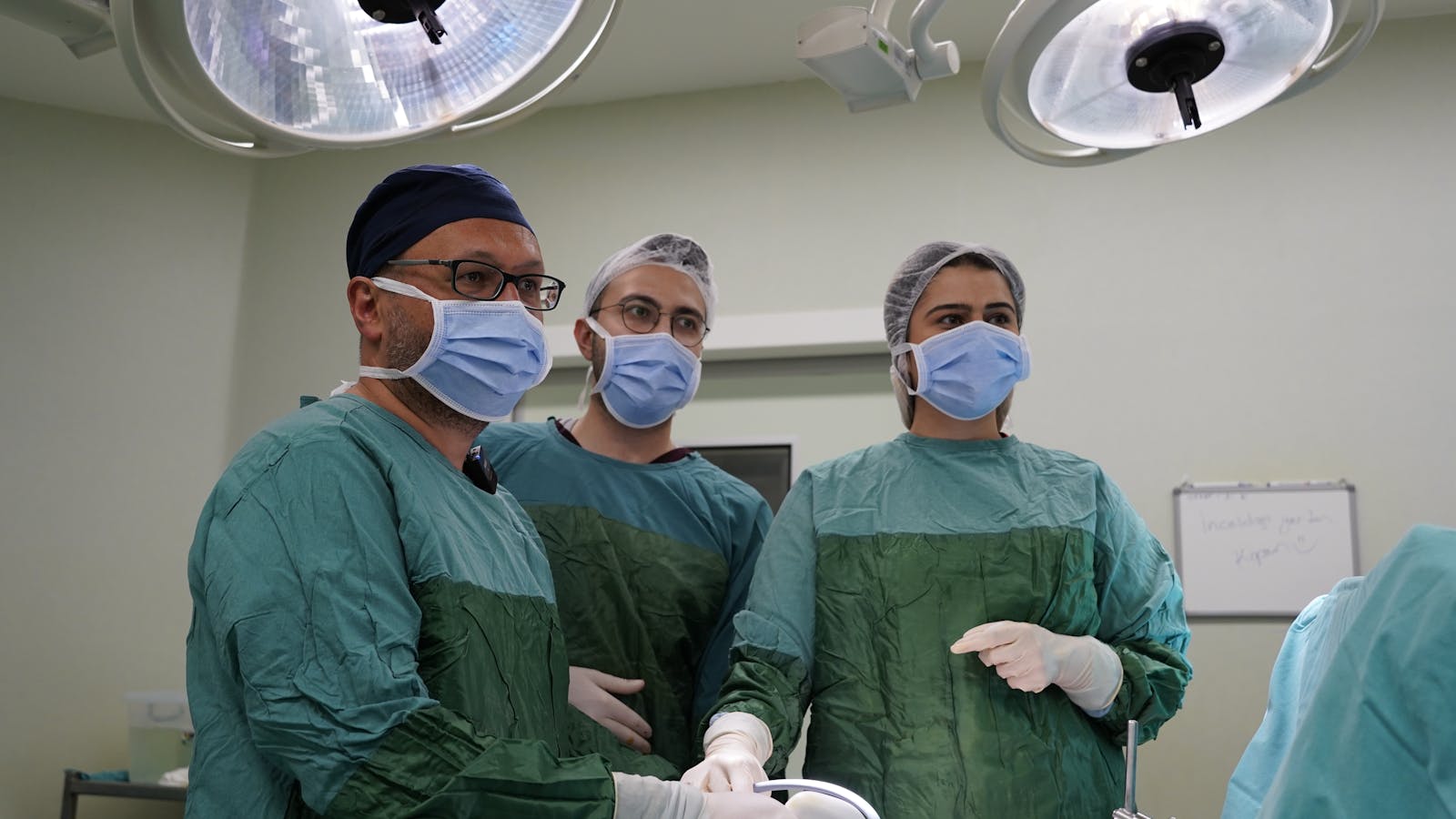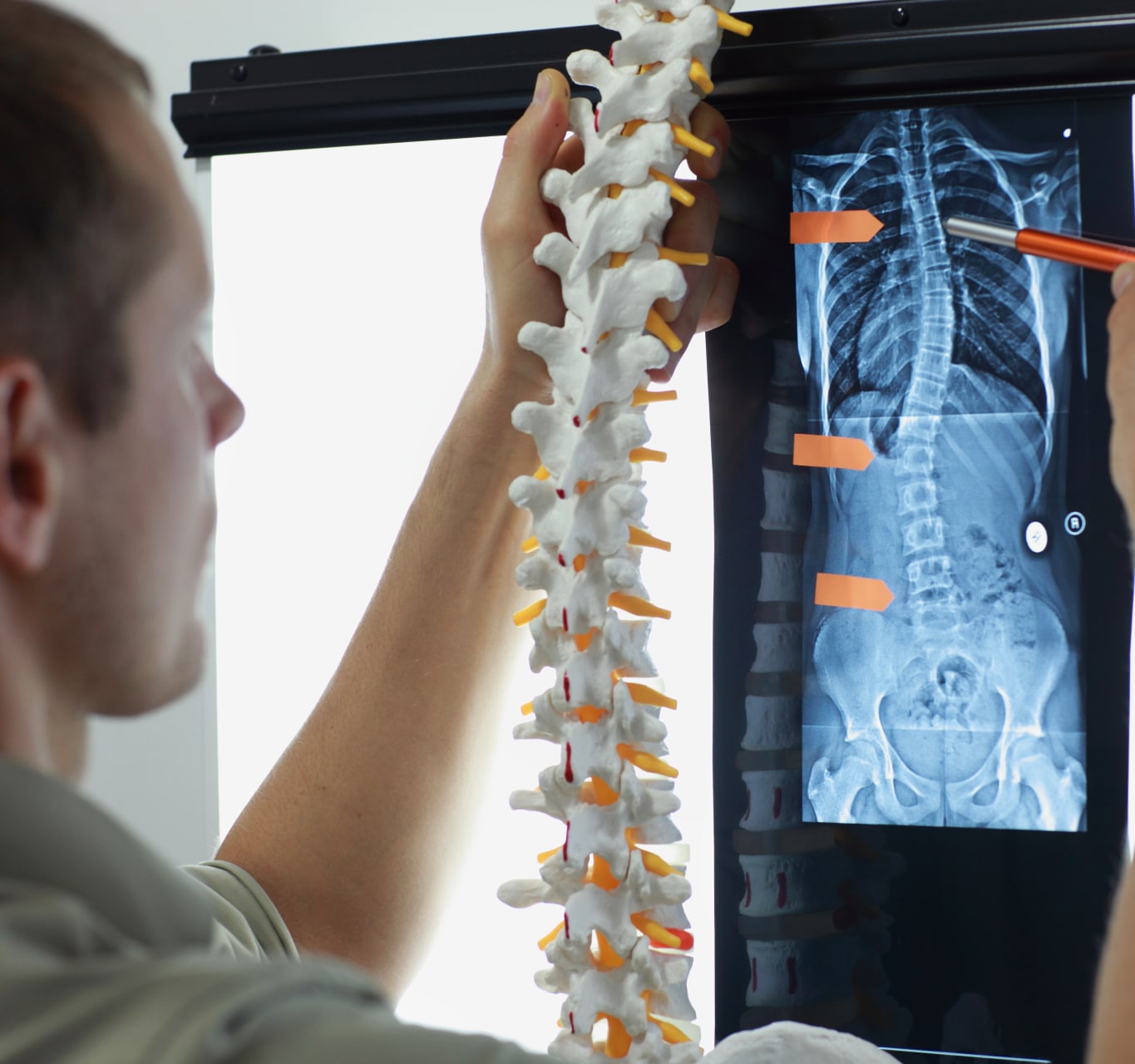The Lumbar Facet Block, a minimally invasive procedure, has emerged as a promising strategy in diagnosing and treating chronic lower back pain. This technique involves injecting a mix of local anesthetic and steroid medication into the facet joints of the lower back, thereby aiding in pinpointing the pain source, and effectively reducing inflammation. As we explore the complexities of this procedure, we invite you to join the discussion on its potential benefits, risks, success rates, and its role in the broader landscape of non-surgical interventions for lumbar discomfort.
Understanding Lumbar Facet Block
A lumbar facet block, an advanced medical procedure, involves the injection of a local anesthetic and a steroid medication into the facet joints located in the lower back to diagnose or treat pain. This non-surgical treatment plays a significant role among pain management options for patients suffering from lumbar facet joint dysfunction.
This procedure serves two primary functions: for one, the injection of anesthetic into the lumbar facet joint can help identify the source of a patient’s pain. If the patient experiences an immediate relief of pain, it is indicative that the pain is originating from the facet joint injected. Additionally, the therapeutic function provides long-term pain relief. The steroid medication can reduce inflammation and swelling around the nerves, consequently alleviating pain and discomfort for a more extended period.
However, like all medical procedures, a lumbar facet block is not without drawbacks. Potential risks may include infection, bleeding, and allergic reactions to the medications used. Despite these, it remains an effective non-surgical treatment option in managing lower back pain, offering patients improved quality of life and functionality.
The Anatomy of the Lumbar Spine
Delving into the intricacies of the lumbar spine, it is composed of five vertebrae, named L1 through L5, which are the largest and carry the most weight compared to the other sections of the spine. These vertebrae provide a protective frame around the spinal cord, a key component in the spinal cord structure, and are specifically designed to withstand significant forces, thereby fulfilling essential lumbar vertebrae functions.
Each vertebra consists of a sturdy vertebral body at the front and a vertebral arch at the back, forming a hollow region for the spinal cord. Between each vertebra, intervertebral discs absorb shock and prevent the bones from rubbing against each other. Facet joints, located at the back of the vertebrae, allow for movement and flexibility of the spine.
The lumbar region is particularly important because it connects the thoracic spine above and the sacral spine below, maintaining the alignment and balance of the entire spinal structure. The lumbar nerves exiting from this region control the lower parts of the body, including the abdomen and legs. Understanding this complex anatomy is paramount in diagnosing and treating conditions related to the lumbar spine.
Causes of Lumbar Facet Pain
The etiology of lumbar facet pain is intricate and identifying its causes can be a complex process. The pain can stem from common triggers including mechanical stress, degenerative changes, or injury. A thorough understanding of these causes is integral to effective diagnosis and treatment planning for lumbar facet pain.
Identifying Lumbar Facet Pain
Identifying lumbar facet pain, which can stem from various causes, is essential for effective diagnosis and treatment. This type of pain typically originates from the facet joints in the lower spine, often as a result of degenerative conditions or injury. Pain management techniques such as physical therapy, medication, or lumbar facet blocks can help manage this discomfort. Lifestyle modifications, including regular exercise and healthy eating, may also contribute to pain management. Each individual’s experience with lumbar facet pain can vary greatly, highlighting the need for a personalized approach. Accurate identification of symptoms, understanding their origin, and a thorough evaluation are important steps in the management of lumbar facet pain.
Common Lumbar Pain Triggers
Understanding the triggers of lumbar facet pain involves a close examination of common causes, which range from degenerative diseases to physical trauma. Conditions such as osteoarthritis, lumbar disc disease, and spinal stenosis often lead to this type of pain. Physical trauma from accidents or sports injuries can also directly impact the lumbar facet joints, resulting in chronic discomfort.
Pain management techniques may involve therapeutic interventions, medication, and even surgery in severe cases. However, lifestyle modifications play a significant role in managing and preventing lumbar facet pain. This may include regular exercise, maintaining a healthy weight, and practicing good posture. Understanding and addressing these triggers is crucial in the successful management of lumbar facet pain.
Symptoms Indicating Facet Joint Problems
If you’re experiencing persistent lower back pain, stiffness, or discomfort during movement, these could be indicative of problems with the facet joints in your lumbar spine. Facet Joint Arthritis, a degenerative condition affecting these joints, often presents these symptoms. This condition may develop due to aging or injury, and its symptoms can greatly reduce one’s quality of life.
These symptoms often manifest as an inability to twist or bend the lower back without experiencing pain, having a noticeable limp, or hearing a grinding noise during the movement of the spine. There may also be radiating pain, which is pain that starts in the lower back and travels down to the buttocks or thighs.
Non Surgical Treatments are often explored to manage these symptoms, including but not limited to physical therapy, chiropractic care, pain management medications, and lumbar facet blocks. However, the effectiveness of these treatments varies from individual to individual and relies heavily on the accurate identification of facet joint problems as the root cause of the discomfort.

Diagnosis Process for Lumbar Facet Pain
The diagnosis process for lumbar facet pain begins with accurate identification, which involves a thorough clinical examination and a detailed patient history. The role of imaging tests, including MRI and CT scans, is crucial in visualizing the affected area and evaluating the extent of the condition. The diagnosis is then confirmed through injections, which act as both a therapeutic and diagnostic tool, providing immediate relief and confirming the source of the pain.
Identifying Lumbar Facet Pain
Diagnosing lumbar facet pain involves a detailed medical history review, physical examination, and possibly imaging studies to evaluate the health condition of the patient’s lower back. The patient’s description of pain, its location, and any related symptoms are critically assessed. Pain management options are then discussed with the patient, which may include both pharmaceutical and non-pharmaceutical strategies. Lifestyle modifications are also explored as part of the diagnosis process, as these could potentially alleviate the patient’s discomfort. Factors such as obesity, poor posture, and a sedentary lifestyle may exacerbate lumbar facet pain, hence their modification may contribute to pain relief. The identification of lumbar facet pain is therefore a thorough process that considers both the patient’s clinical presentation and lifestyle factors.
Role of Imaging Tests
Building upon the diagnosis process, imaging tests play a significant role in evaluating the structural integrity of the lumbar facet joints and pinpointing the source of the patient’s pain. Thanks to imaging technology advancements, tools like CT scans and MRIs can provide detailed images of the facet joints, enabling an accurate diagnosis. These sophisticated imaging techniques allow for the visualization of soft tissue, bone, and cartilage, providing valuable insight into any structural abnormalities or signs of degeneration. However, it’s important to be aware of potential radiology interpretation pitfalls. An overly reliant approach on imaging can overlook the multidimensional nature of lumbar facet pain which often involves interplay of mechanical, inflammatory, and neuropathic components. As such, imaging should be combined with a thorough clinical assessment for a holistic diagnosis.
Confirming Diagnosis: Injections
In the pursuit of a thorough diagnosis for lumbar facet pain, injections serve as an essential tool, specifically in confirming the exact source of the discomfort. There are different injection types utilized in this process, each with a vital purpose and method of application. Anesthetic or steroid injections, for instance, are used to numb the area and reduce inflammation, respectively. The patient’s response to these injections is then observed and evaluated, providing critical information regarding the precise location of the pain. This method of pain management is not only effective for diagnostic purposes but also serves as a therapeutic intervention. It offers immediate relief and can substantiate the need for a lumbar facet block, a more permanent type of pain management solution for persistent lumbar facet pain.
How Lumbar Facet Block Works
The Lumbar Facet Block, a specialized procedure, works by injecting a local anesthetic into the facet joints located in the lumbar region of the spine to alleviate chronic back pain. This is particularly critical in providing immediate pain relief, thereby enabling the individual to participate in physical therapy and other pain management techniques. The procedure can also serve as a diagnostic tool to identify the source of the patient’s discomfort.
The mechanism of action for the Lumbar Facet Block is dual-faceted. Primarily, the injection interrupts the pain signals being sent from the facet joints to the brain. It also delivers a therapeutic anti-inflammatory effect, reducing swelling and irritation in the facet joints. This combined result often leads to a significant reduction in pain levels and an increase in overall mobility.
In terms of facet block costs, it is important to note that these can vary widely depending on a number of factors, including the complexity of the procedure, the healthcare provider’s expertise, and the geographical location. Despite the cost, many patients find this procedure to be a worthwhile investment due to its success rate and the potential for improved quality of life.
The Procedure: Step-by-Step
In our discussion of the Lumbar Facet Block, we will now move on to an examination of the procedure in a detailed, step-by-step manner. This will include a thorough breakdown of the process, from preparation to execution. Subsequently, we will provide an overview of the essential care routines that should be observed post-procedure.
Understanding the Procedure
A lumbar facet block procedure involves several meticulous steps, starting with the patient’s preparation for the injection. The patient is positioned prone on the treatment table and the skin over the facet joints is sterilized. Using fluoroscopic guidance, the physician inserts a needle into the facet joint. A contrast dye is injected to confirm the correct placement of the needle. Then, a mixture of an anesthetic and a steroid is administered to alleviate the pain. Patient testimonials often highlight the relief experienced post-procedure. However, it’s important to understand facet block alternatives as well, such as radiofrequency neurotomy or medial branch blocks, which provide longer-lasting relief for some patients. Each procedure has its benefits, and consultation with a medical professional is pivotal to decide the most suitable approach.
Post-Procedure Care
After the lumbar facet block procedure, careful attention to post-procedure care is essential to ensure maximum pain relief and recovery. Patients are advised to follow thorough pain management strategies that may involve rest, application of heat or cold packs, and appropriate use of prescribed analgesics. Additionally, physiotherapy and other non-pharmacological approaches can be incorporated into the care plan to improve mobility and functionality. Lifestyle modifications, such as maintaining a healthy weight and adopting good posture, are recommended to alleviate strain on the spine. These changes, combined with regular and gentle physical activity, can greatly contribute to long-term success. It’s vital that patients adhere to these recommendations to optimize the benefits of the lumbar facet block.
Effects and Success Rates
While the impact of lumbar facet block treatments can vary greatly among patients, studies have consistently shown promising success rates in the alleviation of lower back pain. As a part of thorough pain management strategies, this non-surgical intervention has been pivotal in providing substantial relief to many individuals suffering from chronic lumbar discomfort.
The success rates of this procedure can largely be attributed to its targeted approach. By focusing on the facet joints, the source of pain is directly addressed, often resulting in immediate relief. The effectiveness of this procedure is markedly enhanced when coupled with physical therapy and lifestyle modifications. It is important to note that while the procedure is not a permanent solution, it can greatly improve the quality of life for many patients, enabling them to participate in regular activities with reduced pain.

Potential Risks and Complications
Despite its high success rates, lumbar facet block treatment is not without potential risks and complications, which must be carefully considered before opting for this procedure. The selection of anesthesia, for instance, can pose certain risks. Although rare, reactions to local anesthetics can occur, leading to cardiovascular or neurological complications. Incorrect positioning of the needle during the procedure can also result in nerve damage or spinal fluid leaks, causing severe headaches.
Postoperative complications, although infrequent, should not be overlooked either. These may include infection, bleeding, and worsening of pain due to increased inflammation. In some cases, over time, the injected steroids can lead to osteoporosis or other systemic side effects, especially in patients with frequent treatments. Dural puncture, a rare but serious complication, can also occur, leading to cerebrospinal fluid leakage and postural headaches.
Moreover, there is a risk of the procedure being ineffective, as it may not provide the anticipated pain relief for all patients. This could be due to various factors such as the complexity of the patient’s condition, inaccurate identification of the pain source, or individual variations in response to treatment. Hence, a thorough risk-benefit analysis should precede the decision to proceed with a lumbar facet block.
Post-Procedure Care and Recovery
In the aftermath of a lumbar facet block, meticulous postoperative care and adherence to recovery instructions are vital to optimize the treatment outcome and mitigate potential complications. It is essential that patients fully comprehend the importance of these guidelines in order to expedite the healing process, minimize discomfort, and maximize the benefits of the procedure.
Effective pain management strategies are an integral part of postoperative care. These may encompass prescribed medications, over-the-counter analgesics, and non-pharmacological techniques such as heat and cold therapy. Patients should be educated on the appropriate use and potential side effects of these interventions to guarantee their safety and efficacy.
In addition to pharmacological measures, physical therapy offers significant benefits in the recovery phase. Customized exercise programs aid in restoring flexibility, strength, and function to the affected area, facilitating a quicker return to daily activities. Moreover, physical therapy can provide strategies for maintaining good posture and body mechanics, thereby preventing further strain on the lumbar region.
Patient compliance with these post-procedure instructions is vital. Regular follow-ups with the healthcare provider are also necessary to monitor progress and make necessary adjustments to the care plan. This holistic approach to post-procedure care and recovery can greatly enhance the overall success of the lumbar facet block.
Alternatives to Lumbar Facet Block
Exploring alternatives to the lumbar facet block is important for patients who may not be suitable candidates for this procedure, or for those who have not achieved sufficient pain relief from it. Non-surgical alternatives, such as physical therapy, can provide substantial pain reduction and improved functionality. Therapeutic exercises, combined with manual therapy techniques, can effectively alleviate symptoms by enhancing muscle strength, flexibility, and posture.
Acupuncture, another alternative, has shown significant effectiveness in managing lower back pain. This traditional Chinese medicine technique involves inserting thin needles into specific points on the body, aiming to restore balance and promote the body’s natural healing ability. Studies have consistently demonstrated its efficacy in reducing chronic pain, including that associated with lumbar facet joint disorders.
Furthermore, the use of medications, like nonsteroidal anti-inflammatory drugs (NSAIDs), can provide temporary relief. Steroid injections, offering a more targeted approach, can alleviate pain by reducing inflammation directly at the source.
Lastly, lifestyle modifications, such as maintaining a healthy weight and practicing good posture, can also play a vital role in managing lumbar facet joint pain. These alternatives can provide a holistic, multi-disciplinary approach to pain management, offering various options to patients based on their individual needs.
Frequently Asked Questions
What Is the Cost of a Lumbar Facet Block Procedure?
The cost of the procedure varies greatly depending on location, insurance, and specific medical circumstances. It’s important to evaluate procedure risks and explore pain management alternatives for a thorough understanding of potential expenses.
Is Lumbar Facet Block Covered by Insurance Policies?
Insurance eligibility for specific procedures varies by provider. The coverage of the procedure in question is typically determined through a pre-authorization process with the insurance company. Check with your provider for concrete information.
Can I Drive Myself Home After a Lumbar Facet Block Procedure?
After any procedure involving sedation, self-transportation is generally not advised due to residual sedation effects. It’s recommended to arrange for a companion to drive you home to guarantee a safe recovery period.
How Frequently Can I Undergo a Lumbar Facet Block Procedure?
The frequency of undergoing this procedure depends on its effectiveness in pain management. Typically, it can be repeated every few months if beneficial. However, the exact interval should be determined by your treating physician.
Are There Any Lifestyle or Dietary Changes Required After a Lumbar Facet Block?
Post-procedure lifestyle modifications may include exercise recommendations for strengthening and flexibility. Dietary changes are not typically required. Pain management techniques, such as mindfulness and relaxation, can also be beneficial for overall recovery and well-being.

